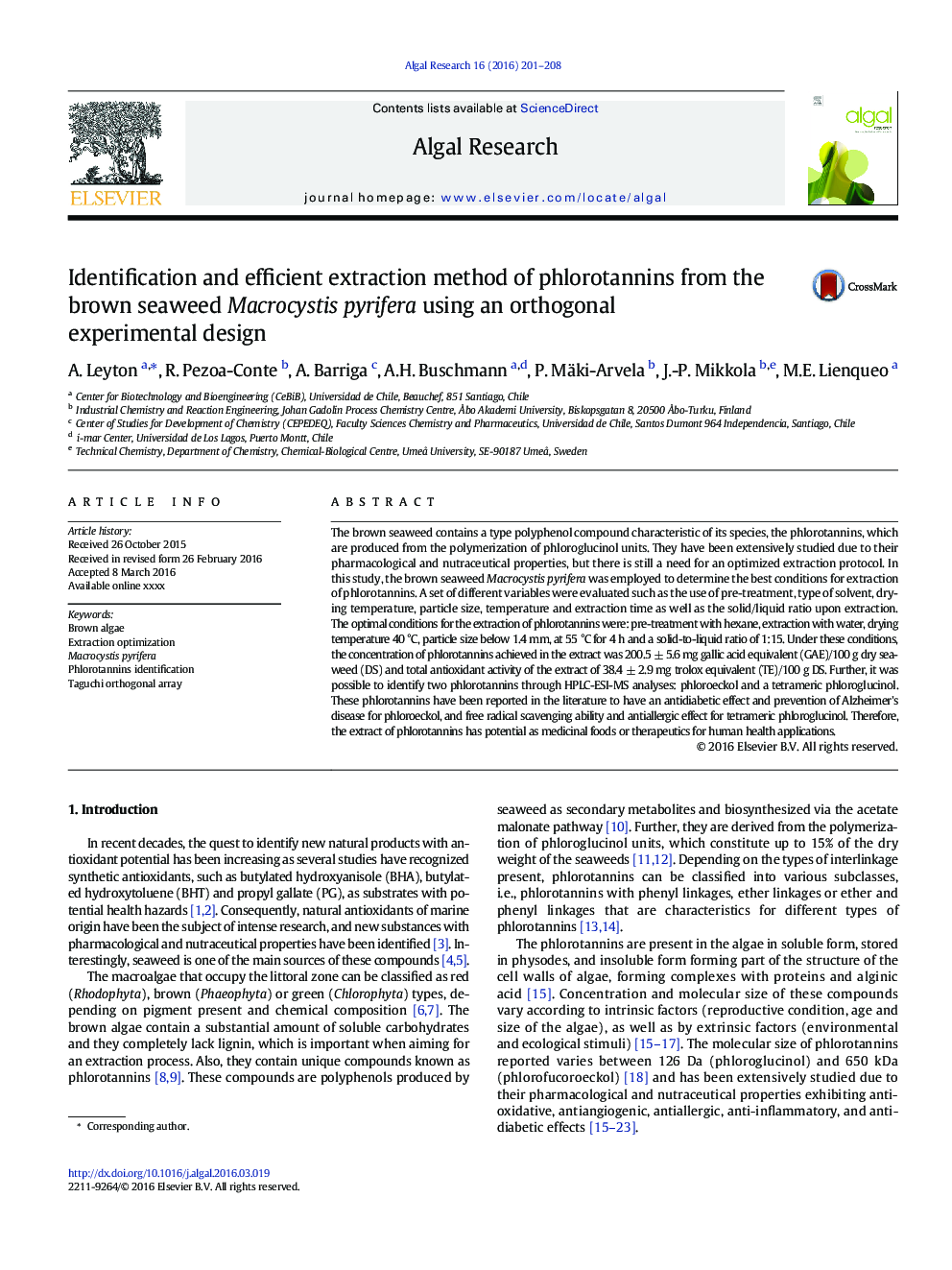| Article ID | Journal | Published Year | Pages | File Type |
|---|---|---|---|---|
| 8087127 | Algal Research | 2016 | 8 Pages |
Abstract
The brown seaweed contains a type polyphenol compound characteristic of its species, the phlorotannins, which are produced from the polymerization of phloroglucinol units. They have been extensively studied due to their pharmacological and nutraceutical properties, but there is still a need for an optimized extraction protocol. In this study, the brown seaweed Macrocystis pyrifera was employed to determine the best conditions for extraction of phlorotannins. A set of different variables were evaluated such as the use of pre-treatment, type of solvent, drying temperature, particle size, temperature and extraction time as well as the solid/liquid ratio upon extraction. The optimal conditions for the extraction of phlorotannins were: pre-treatment with hexane, extraction with water, drying temperature 40 °C, particle size below 1.4 mm, at 55 °C for 4 h and a solid-to-liquid ratio of 1:15. Under these conditions, the concentration of phlorotannins achieved in the extract was 200.5 ± 5.6 mg gallic acid equivalent (GAE)/100 g dry seaweed (DS) and total antioxidant activity of the extract of 38.4 ± 2.9 mg trolox equivalent (TE)/100 g DS. Further, it was possible to identify two phlorotannins through HPLC-ESI-MS analyses: phloroeckol and a tetrameric phloroglucinol. These phlorotannins have been reported in the literature to have an antidiabetic effect and prevention of Alzheimer's disease for phloroeckol, and free radical scavenging ability and antiallergic effect for tetrameric phloroglucinol. Therefore, the extract of phlorotannins has potential as medicinal foods or therapeutics for human health applications.
Related Topics
Physical Sciences and Engineering
Energy
Renewable Energy, Sustainability and the Environment
Authors
A. Leyton, R. Pezoa-Conte, A. Barriga, A.H. Buschmann, P. Mäki-Arvela, J.-P. Mikkola, M.E. Lienqueo,
